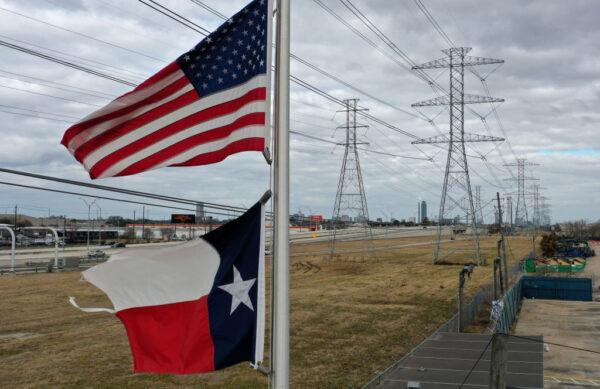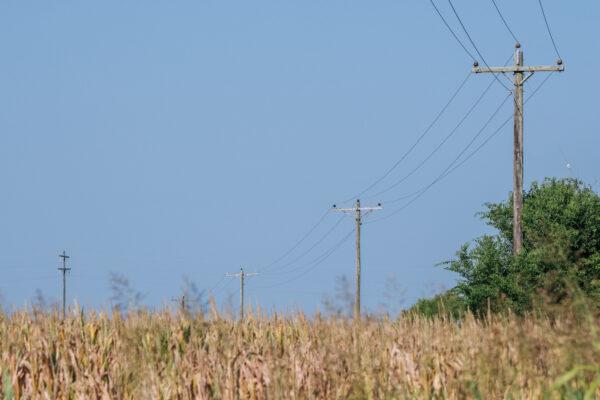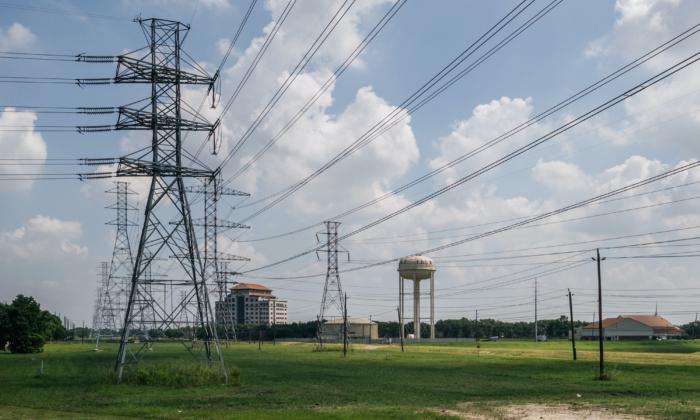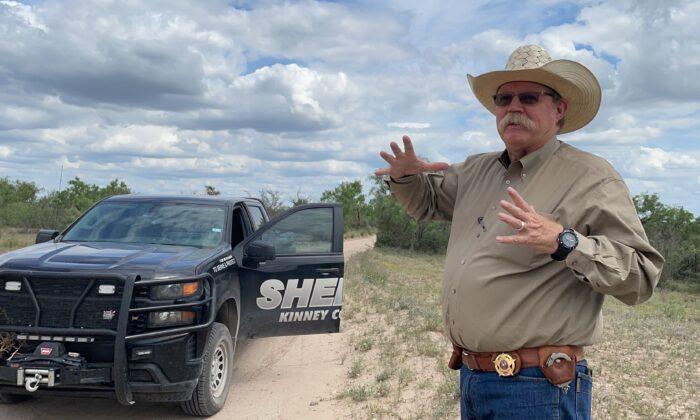While Texas has passed legislation to strengthen the state’s electricity grid after a devastating winter storm last February, some in the energy sector worry that the state might not be ready if a similar storm strikes this winter.
Jason Modglin, president of the Texas Alliance of Energy Producers, said positive steps have been taken by the Texas legislature and state regulators, but the process takes time.
“We still remain concerned,” said Modglin. “There’s zero guarantee the actions will keep the power on if we get a big freeze.”
The Public Utility Commission (PUC) of Texas and Electric Reliability Council of Texas (ERCOT) outlined new actions on Dec. 7 to shore up the grid with a focus on natural gas. PUC, whose board is appointed by Texas Gov. Greg Abbott, has jurisdiction over ERCOT, which manages Texas’ independent electricity grid.
The action comes in wake of Winter Storm Uri, which swept through the state in February leaving ice, snow, and single-digit temperatures. As the demand for electricity spiked, energy production from all sectors plummeted due to lack of weatherization and failure to keep the power on to natural gas producers supplying electricity plants, among other reasons.
With less power and overwhelming demand, ERCOT was forced to initiate blackouts, resulting in millions of Texans left without power, a contributing factor to more than 200 deaths and billions in lost revenue.
Natural gas supplies 46 percent of the power to the Texas grid; 23 percent of the power comes from wind, 18 percent from coal, 11 percent from nuclear, and the remainder from other sources.

The actions announced by ERCOT and PUC on Dec. 7 include the adoption of rules to identify natural gas facilities that are critical to the operation of the electric grid and increase penalties for power plants violating weatherization rules to $1 million per day per violation.
“The PUC is working at light speed to enhance our grid and ensure reliability for this winter,” PUC Chairman Peter Lake said in a press release on Dec. 8. “As a result of the combination of these efforts, the ERCOT grid today is stronger than ever.”
Mike Hoke, a PUC media spokesman, told The Epoch Times that companies were required to file a winter weather preparedness report with ERCOT by Dec. 1. PUC enforcement staff are already seeking penalties against eight companies for failure to file reports.
The Texas Railroad Commission adopted similar rules Nov. 30 for critical designation of natural gas infrastructure to help protect Texans in an energy emergency.
The new rules were part of the Texas legislature’s response to the February grid crisis. The legislative action requires upgrades for power generators and transmission lines to make them better withstand extreme weather.
The law also required entities to weatherize if deemed “critical” by natural gas regulators. The Texas Railroad Commission regulates natural gas and oil, while the Texas Public Utilities Commission regulates electric utilities for the state. Since gas is the main source of fuel for electricity, the two agencies are working together to strengthen the grid.

Last winter, many natural gas companies failed to fill out paperwork that would have protected them from having their electricity cut during February’s winter storm.
Todd Staples, president of the Texas Oil & Gas Association, said it’s important to note that pre-storm, the ERCOT critical load designation paperwork excluded the majority of the natural gas supply chain.
“It was not intended to apply to field services,” he said, so during the storm those facilities lost power.
Staples said the revised form published in March includes more of the natural gas pipeline infrastructure, which facilitates the flow or transportation from large gas wells through pipelines to natural gas production facilities or power plants.
Since the form was revised to include more of the natural gas supply chain, more than 1,000 facilities have applied to be added to the list of critical facilities that won’t have their power cut off. The number will likely increase as the Jan. 15, 2022, deadline for designation approaches and the mapping of critical assets continues.
Mapping hundreds of thousands of assets will take time, and many operators are charting their assets internally to assist in the process. Both the RRC and PUC are working to expedite the process ahead of statutory deadlines.





